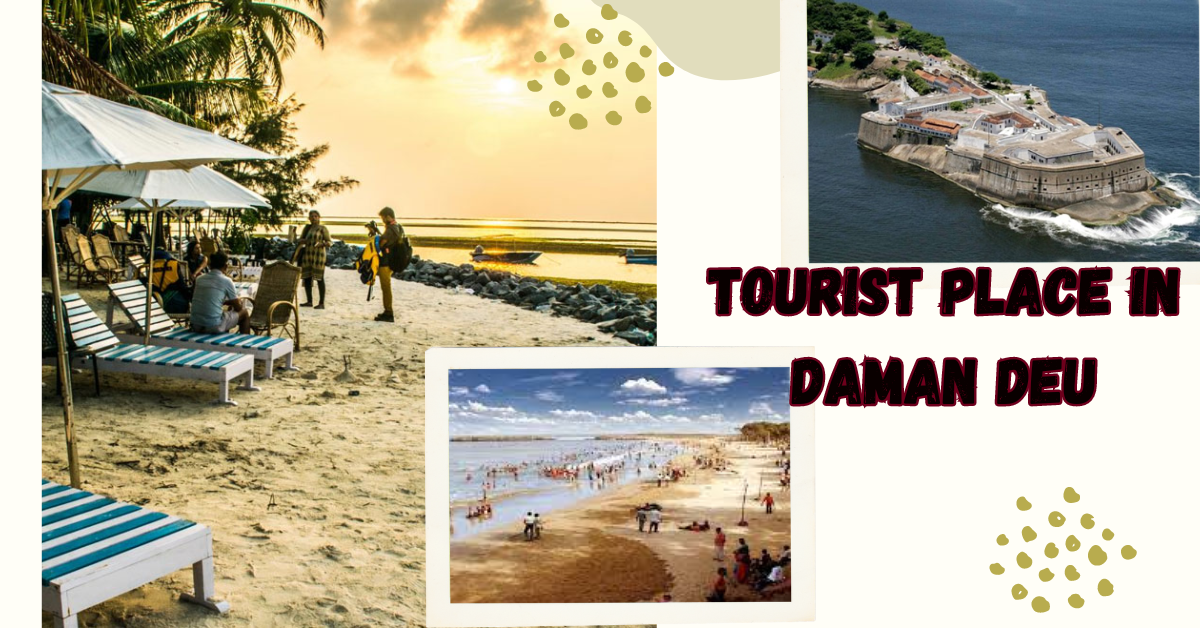Nestled along the Arabian Sea, the union territory of Daman and Diu invites travelers to explore its historical charm, cultural fusion, and scenic landscapes. The top tourist places in Daman and Diu not only showcase the region’s natural beauty but also play a crucial role in shaping the societal narrative. In this blog post, we’ll traverse through the best and famous tourist places in Daman and Diu, exploring their relevance, evolution, and potential future developments.

Relevance and Cultural Significance:
- Diu Fort: The Diu Fort, with its strategic location overlooking the Arabian Sea, is a testament to the region’s historical significance. Built by the Portuguese, the fort stands as a symbol of Daman and Diu’s colonial past and architectural grandeur.
- St. Paul’s Church, Diu: St. Paul’s Church, with its intricate architecture and serene surroundings, reflects the religious and cultural diversity of Daman and Diu. The church, built during the Portuguese era, showcases the coexistence of different cultural influences in the region.
- Naida Caves: The Naida Caves, a hidden gem in Diu, not only provide a unique geological experience but also contribute to the cultural and historical narrative. The caves, carved out of laterite rocks, serve as a testament to the region’s ancient craftsmanship and architectural prowess.
Evolution of Tourist Places:
- Daman Fort: The Daman Fort, built during the Portuguese rule, has evolved into a key tourist attraction. The fort, with its massive stone walls and cannons, now offers visitors a glimpse into Daman’s history and provides a panoramic view of the surrounding areas.
- Jampore Beach: Jampore Beach, once a secluded coastline, has evolved into a popular destination for both locals and tourists. The beach, with its serene ambiance and water sports activities, reflects the changing preferences and desires of modern-day travelers.
- Diu Museum: The Diu Museum, housed in the St. Thomas Church, has evolved into a repository of artifacts and exhibits that narrate the region’s history. The museum’s collection showcases the evolution of Daman and Diu through different historical periods.
Impact on Society:
- Cultural Fusion: Daman and Diu’s tourist places are platforms for cultural fusion. The coexistence of Portuguese and Indian influences, seen in the architecture, cuisine, and festivals, fosters a sense of unity and diversity among the local population.
- Economic Growth: The tourism industry in Daman and Diu is a significant contributor to economic growth. The influx of visitors supports local businesses, including hospitality, transportation, and handicrafts, creating employment opportunities and contributing to the prosperity of the region.
- Preservation of Heritage: The preservation of historical and cultural heritage is a focal point in Daman and Diu. Efforts to maintain forts, churches, and traditional crafts not only attract visitors but also instill a sense of pride and responsibility among the local community.
Potential Future Developments:
- Sustainable Tourism Practices: Future developments should prioritize sustainable tourism practices. Responsible management of historical sites, conservation efforts, and the implementation of eco-friendly initiatives can ensure the long-term viability of Daman and Diu’s cultural and natural landmarks.
- Digital Integration for Cultural Narratives: Leveraging technology for tourism can enhance visitor experiences. Digital platforms, virtual reality tours, and interactive exhibits can provide a more immersive understanding of Daman and Diu’s history, culture, and natural beauty.
- Community Engagement and Skill Development: In the future, there could be increased emphasis on community engagement through tourism. Involving local communities in the management and promotion of tourist places can ensure that the benefits of tourism are shared, fostering a sense of ownership and pride. Skill development programs can equip locals with the necessary tools to actively participate in the tourism industry.
Conclusion:
Daman and Diu’s best and famous tourist places are not just physical destinations; they are living testaments to the region’s history, cultural amalgamation, and natural splendor. As we explore the Diu Fort, relax on Jampore Beach, or marvel at the Naida Caves, it is evident that these landmarks are integral to the societal fabric of Daman and Diu. Looking ahead, sustainable practices, technological integration, and community engagement can further elevate the region as a cultural and historical treasure trove, where the echoes of the past harmonize with the aspirations of the future. Let us celebrate the diversity, embrace the narratives, and contribute to a legacy that continues to unfold on the picturesque shores of Daman and Diu.

Best and Famous 37 Tourist Places List in India
| Zone | States | |||
| North | Jammu & Kashmir | Haryana | Delhi
Rajasthan |
Punjab |
| Central | Uttar Pradesh | Madhya Pradesh | Chhattisgarh | Uttarakhand |
| East | Bihar
Sikkim |
Odisha | Jharkhand | West Bengal |
| West | Gujarat
Goa |
Daman Diu | Maharashtra | Dadra Nagar Haveli |
| South | Karnataka
Tamil Nadu |
Kerala
Puducherry |
Andhra Pradesh
Andaman Nicobar |
Telangana
Lakshadweep |
| Northeast | Manipur
Meghalaya |
Mizoram
Assam |
Tripura
Arunachal Pradesh |
Nagaland |
| Southeastern | Ladakh | |||
